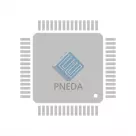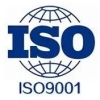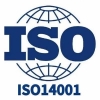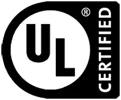Breaking space Limits: How can 3D packaging Technology change optical communications

In the field of data centers and supercomputers, data transmission speeds are facing unprecedented challenges. With the rapid development of artificial intelligence, the Internet of Things and 5G technologies, global data traffic has exploded. Traditional electrical interconnection technology is approaching the physical limit and cannot meet the increasing demand for data transmission. In this context, optical communication technology, with its advantages of high bandwidth, low delay and anti-interference, has become a key technology to break through the bottleneck of data transmission. However, the size and integration limitations of optical communication modules restrict their application in a wider range of scenarios. The emergence of 3D packaging technology has brought a revolutionary breakthrough for the development of optical communication technology.
一, 3D packaging technology: break through traditional limitations
3D packaging technology enables high density integration between chips through vertical stacking and multi-layer interconnection. This technology breaks through the limitations of traditional 2D flat package, integrates multiple chips in the vertical direction, and significantly improves the package density. In the field of optical communication, 3D packaging technology can vertically integrate optical devices such as lasers, BZX84C13LT1GOSCT modulators, detectors and electronic chips to achieve optoelectronic integration.
Traditional optical modules are assembled by discrete components, which have the problems of large volume, high power consumption and high cost. 3D packaging technology integrates optical devices and electronic chips in the same package through wafer-level integration and micro and nano processing, greatly reducing the module size. For example, silicon optical modules using 3D packaging technology can be reduced to 1/10 of the size of traditional modules and reduce power consumption by more than 50%.
Inside the data center, 3D packaging technology enables tight integration of the optical engine with the switching chip. This integration method reduces the interconnect distance between chips, reduces signal attenuation and crosstalk, and improves the overall performance of the system. Intel's co-packaged optics (CPO) technology integrates the optical engine with the switch chip in a 3D package, achieving an ultra-high bandwidth of 25.6Tbps.
二, Technological innovation: from concept to practice
Silicon photonics technology is a key support for 3D packaging applications in optical communication. By integrating laser, modulator, waveguide and other optical components on silicon-based materials, the monolithic integration of optoelectronic devices is realized. This technology makes full use of mature CMOS processes and significantly reduces manufacturing costs. Cisco's silicon photonics platform has achieved single-channel transmission rates of 100Gbps, and has the ability to upgrade to 400Gbps.
Heterogeneous integration technology is another breakthrough in 3D packaging. The problem of low luminous efficiency of silicon-based materials was solved by heterointegration of III-V compound semiconductors with silicon-based materials. The heterogeneous integrated silicon photonic chip developed by Intel integrates InP lasers with silicon waveguides to achieve a low-cost, high-performance optical communication solution.
In terms of manufacturing processes, wafer-level packaging and TSV (through-silicon) technology are key breakthroughs. TSV technology realizes the vertical interconnection between chips, greatly reduces the interconnection distance, and improves the signal transmission speed. The CoWoS (Chip on Wafer on Substrate) packaging technology developed by TSMC has been successfully applied to the manufacture of high-performance optical communication modules.
三, Future outlook: reshaping the optical communication pattern
The application of 3D packaging technology will promote the development of optical communication to higher density and lower power consumption. It is expected that by 2025, optical modules using 3D packaging technology will account for more than 40% of the market share. This technological breakthrough will accelerate the popularization and application of optical communication in data centers, 5G base stations and other scenarios.
In the data center field, 3D packaging technology will promote the process of optical interconnection instead of electrical interconnection. By closely integrating the optical engine with the computing chip, the data transmission power consumption can be greatly reduced,and the system energy efficiency can be improved. In its new generation of data centers, Google has begun deploying optical interconnect solutions based on 3D packaging technology.
3D packaging technology will also promote the deep integration of optical communication and artificial intelligence. By 3D integration of optical computing units and storage units, a new type of optical computing architecture can be built, breaking the limitations of traditional von Neumann architectures. This integration will promote the development of optical communication in the direction of intelligence and open new application scenarios.
3D packaging technology is reshaping the optical communications industry landscape. It not only solves the volume and performance limitations of traditional optical modules, but also opens up a new way for the future development of optical communication technology. As the technology continues to mature, 3D packaging will play an increasingly important role in optical communications, driving the entire industry toward higher performance and lower costs. This technological revolution will not only change the optical communication industry, but also profoundly affect the development direction of the entire information technology industry.
您可能感興趣的產品
 |
FLT007A0Z | LINE FILTER 75VDC 7A TH | 49416 More on Order |
 |
CP2000AC54TEP | AC/DC CONVERTER 54V 5.2V 2000W | 5490 More on Order |
 |
EVW010A0B641-HZ | DC DC CONVERTER 12V 120W | 5940 More on Order |
 |
JNCW450R41-18Z | DC DC CONVERTER 32V 450W | 7704 More on Order |
 |
QRW025A0A741-HZ | DC DC CONVERTER 5V 125W | 8190 More on Order |
 |
QRW040A0Y641 | DC DC CONVERTER 1.8V 72W | 6858 More on Order |
 |
QRW025A0A641Z | DC DC CONVERTER 5V 125W | 6858 More on Order |
 |
JNW350R41-18TZ | DC DC CONVERTER 28V 350W | 6894 More on Order |
 |
KNW013A0A41Z | DC DC CONVERTER 5V 65W | 3978 More on Order |
 |
SW003A0A91Z | DC DC CONVERTER 5V 15W | 5040 More on Order |
 |
AXA003A0X4Z | DC DC CONVERTER 0.8-5.5V 16W | 4680 More on Order |
 |
QW030A1 | DC DC CONVERTER 5V 30W | 3654 More on Order |
 |
NH050F-LP | DC DC CONVERTER 3.3V 50W | 5040 More on Order |
 |
LW025F871 | DC DC CONVERTER 3.3V 25W | 3924 More on Order |
 |
JW075H1 | DC DC CONVERTER 24V 75W | 7380 More on Order |
 |
JW050F6 | DC DC CONVERTER 3.3V 33W | 8604 More on Order |
 |
JAHW100Y1 | DC DC CONVERTER 1.8V 36W | 7488 More on Order |
 |
HW004A0A1-S | DC DC CONVERTER 5V 20W | 79 More on Order |
 |
DW025ACL-M | DC DC CONVERTER 5V +/-15V 25W | 5616 More on Order |
 |
ESTW036A0F41Z | DC DC CONVERTER 3.3V 120W | 3744 More on Order |
 |
APTH006A0X4-SRZ | DC DC CONVERTER 0.6-3.63V 22W | 2196 More on Order |
 |
FKX003A0X3-SRZ | DC DC CONVERTER 0.6-5.5V | 5760 More on Order |
 |
ATA016A0X3-SRZ | DC DC CONVERTER 0.8-5.5V 88W | 14862 More on Order |
 |
PVX006A0X3-SRZ | DC DC CONVERTER 0.6-5.5V 33W | 0 More on Order |









